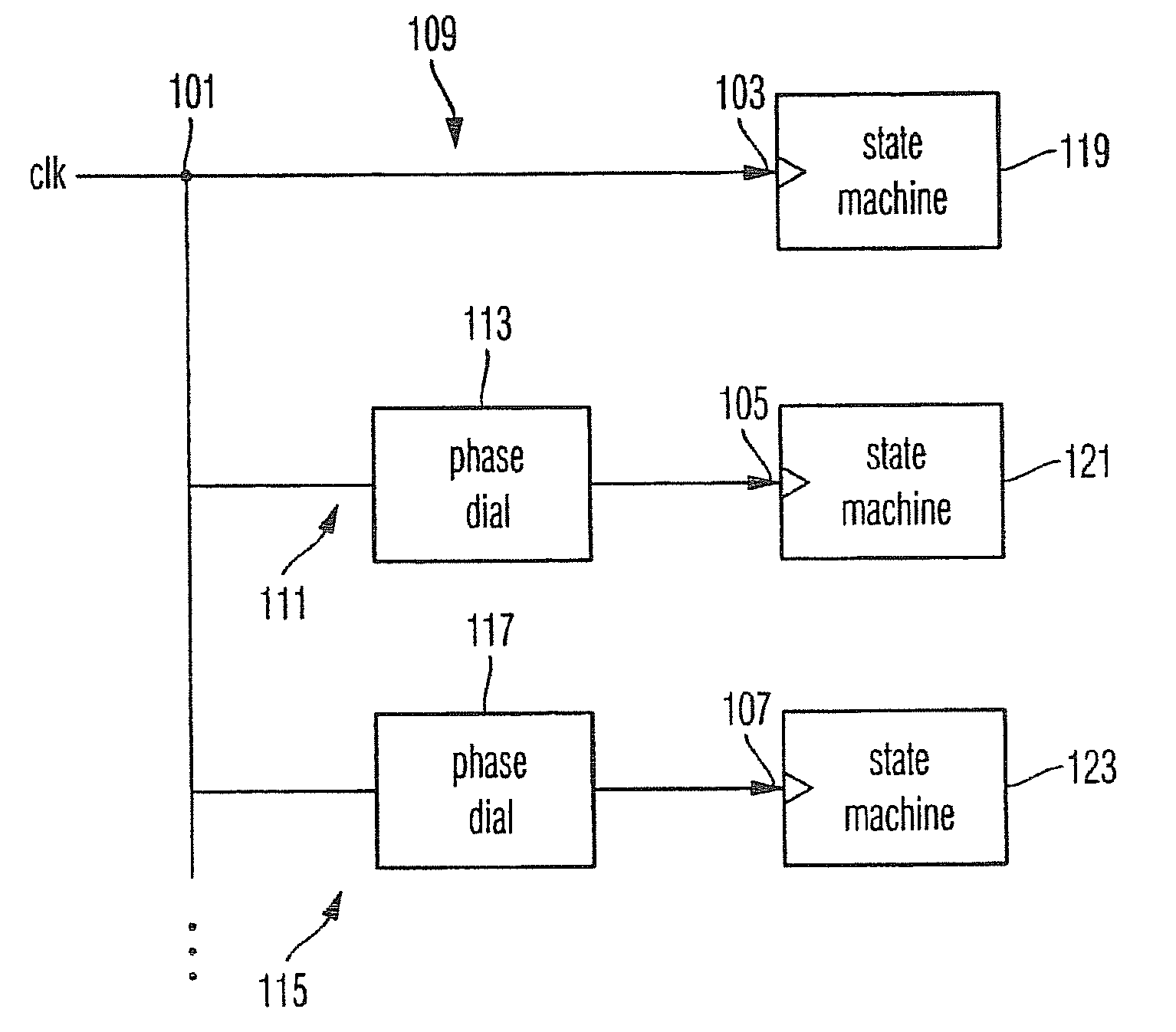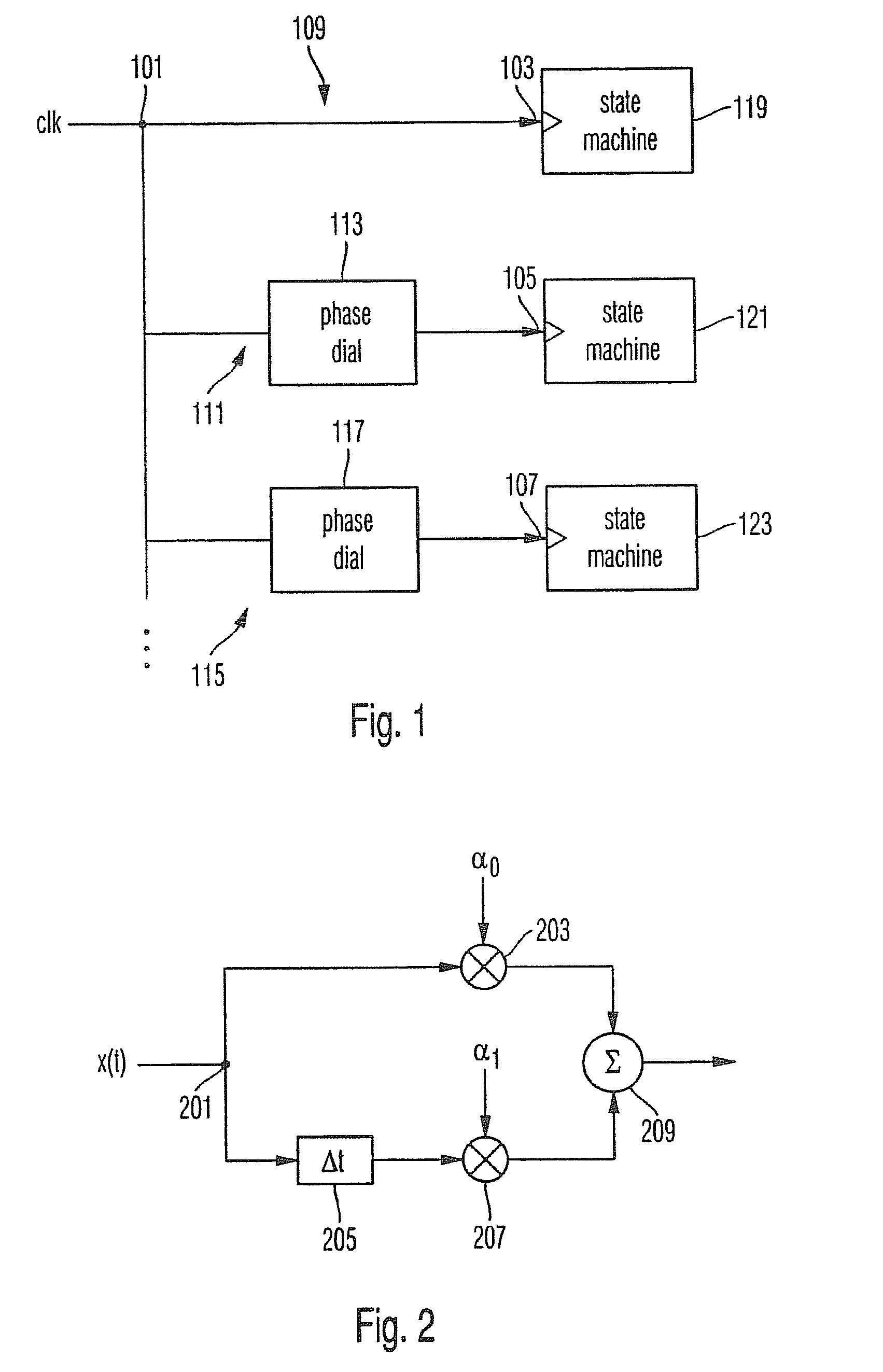Device and method for synchronizing the states of a plurality of sequential processing units
a technology of synchronizing state and sequential processing, applied in the direction of transmission, electric digital data processing, instruments, etc., can solve the problems of receiving errors, affecting the quality of the signal, and the output of the ascending processor does not match the original data, so as to achieve the effect of ensuring the quality of the signal
- Summary
- Abstract
- Description
- Claims
- Application Information
AI Technical Summary
Benefits of technology
Problems solved by technology
Method used
Image
Examples
Embodiment Construction
[0078]The inventive approach may be used for synchronizing the states of multiple circuits running on a common clock signal, especially in applications where the distribution of a common reset signal to all circuits is not practical. The block diagram depicted in FIG. 1 depicts the case of three circuits as an example, but the approach generalizes to any number of circuits. After starting the circuits from random initial states, offsets between states are measured. One of the circuits can be chosen as a reference and the states of all other circuits can be shifted ahead or back with respect to the reference circuit by rotating the related phase dial over the number of full turns required to bring the error down to zero. Thus, it is possible to avoid providing a phase dial rotating a phase of a clock signal for the reference circuit. Thus, a calibration of the relative phases at which the circuits update their states can be achieved without additional hardware. Instead of rotating a ...
PUM
 Login to View More
Login to View More Abstract
Description
Claims
Application Information
 Login to View More
Login to View More - R&D
- Intellectual Property
- Life Sciences
- Materials
- Tech Scout
- Unparalleled Data Quality
- Higher Quality Content
- 60% Fewer Hallucinations
Browse by: Latest US Patents, China's latest patents, Technical Efficacy Thesaurus, Application Domain, Technology Topic, Popular Technical Reports.
© 2025 PatSnap. All rights reserved.Legal|Privacy policy|Modern Slavery Act Transparency Statement|Sitemap|About US| Contact US: help@patsnap.com



